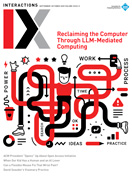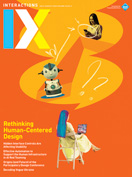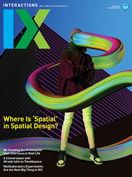Authors:
Deepa Singh, Kay Kender
Our experiences of otherness intertwined with our sociality are rife with alienation and exclusion, as we are forced to navigate spaces that are inherently not designed for us. In this existential experience of being in the world, marked by ever-present otherness, we seek spaces of belonging where we feel at home. We find safe spaces by secluding ourselves in hermitage with those who are closest to us, or by escaping to surround ourselves with trees, communing with other living things that give us solidarity and sociality. Insights → Third spaces are liminal in the sense that they exist…
You must be a member of SIGCHI, a subscriber to ACM's Digital Library, or an interactions subscriber to read the full text of this article.
GET ACCESS
Join ACM SIGCHIIn addition to all of the professional benefits of being a SIGCHI member, members get full access to interactions online content and receive the print version of the magazine bimonthly.
Subscribe to the ACM Digital Library
Get access to all interactions content online and the entire archive of ACM publications dating back to 1954. (Please check with your institution to see if it already has a subscription.)
Subscribe to interactions
Get full access to interactions online content and receive the print version of the magazine bimonthly.






